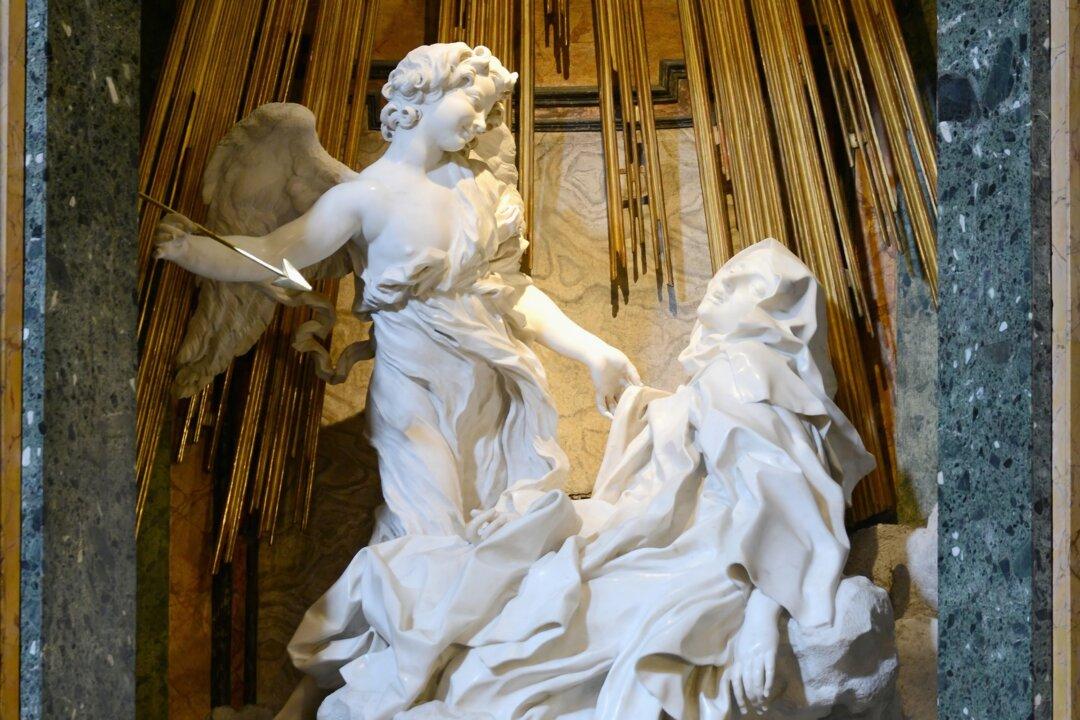Between the years of 1647 and 1652, Gian Lorenzo Bernini produced what is considered his greatest sculpture: “Ecstasy of Saint Teresa.” One of the greatest artists living at the time, Bernini found his reputation tarnished after a mishap during the construction of the basilica of St. Peter’s Cathedral. It was later proven that he wasn’t at fault.
Certainly, he redeemed himself by sculpting the “Ecstasy of Saint Teresa.”





